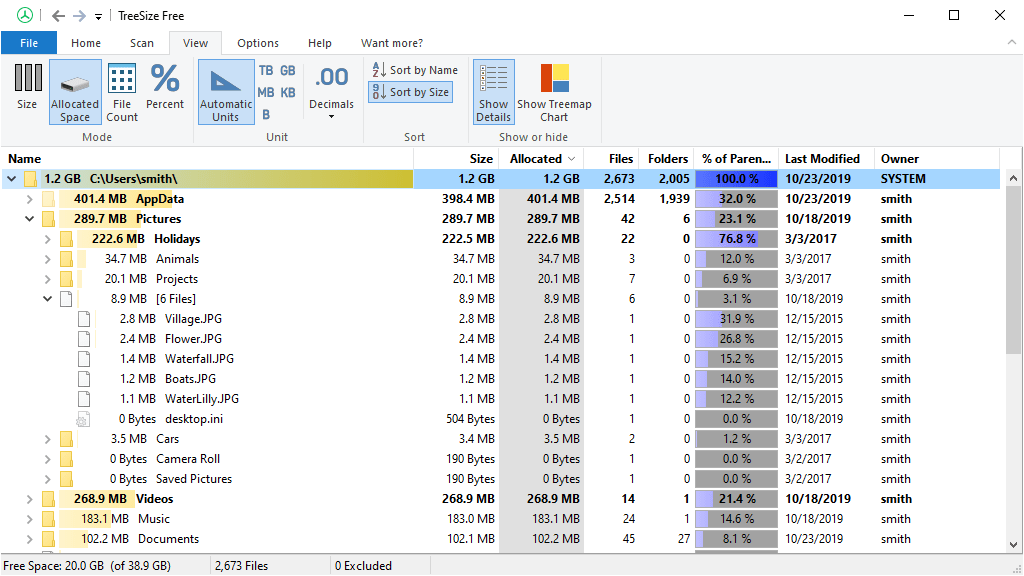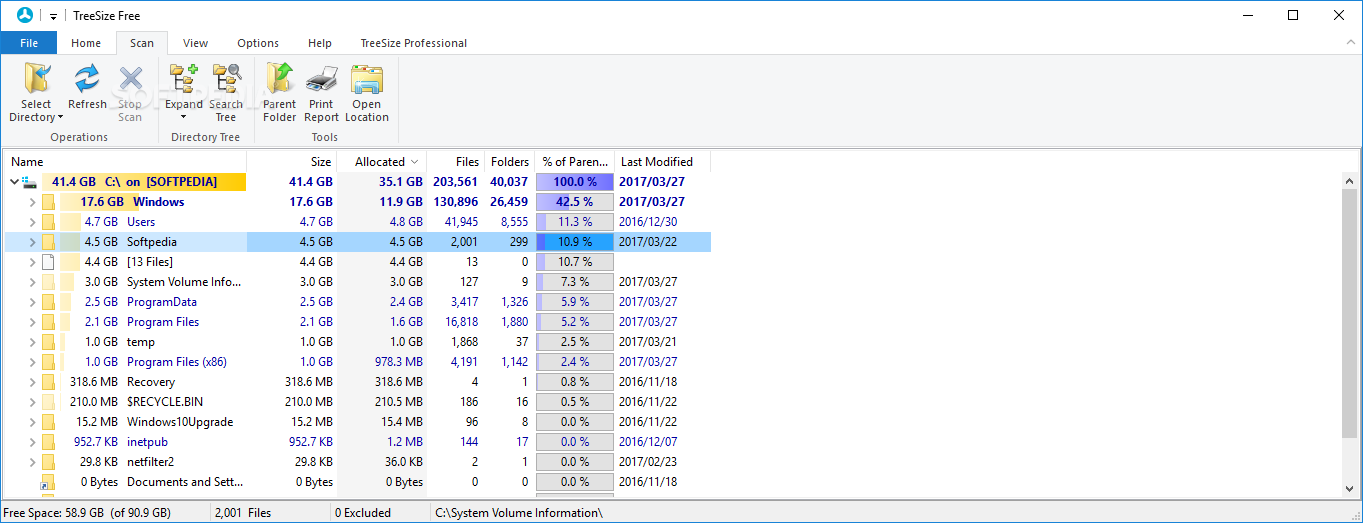
- #Treesize pro free alternative install
- #Treesize pro free alternative full
- #Treesize pro free alternative portable
Typing subst by itself will show you whats going on at the current time.Īnother application worth mentioning is Scanner, which is another graphical way of looking at your disk usage, with a funny interface (click on a shaded ring to expand that section). BUt they CAN be a trap for young players if you don't know what's going on. Subst settings disappear when you close a session (logoff). Works just fine (as long as you've authenticated with that server along the way). You can use SUBST against mapped drives, and use UNC connections as well Replace C:\users$ with whatever path you like. Then when you run Spacemonger and run it against drive 'R:' it will only parse the Users$ directory. Say you want to just check the USERS$ directory on the server, instead of the entire box and dice Handy hint: if you want to just check a sub-directory instead of an entire drive/partition, use SUBST from the CMD prompt

Don’t forget to check out our Youtube Page for sysadmin video content.SpaceMonger is a nice 'graphical' way to show whats using up all that disk space.
#Treesize pro free alternative full
If you like these kinds of posts, feel free to check out our gallery full of useful real-world scripts. It’s not that much effort to run and it provides a ton of useful information so it’s pretty much a no brainer.Īll in all I wanted to say thanks a lot for taking the time to visit and hopefully you can make use of the Powershell script in your environment. I’m pretty stoked how quickly it was able to process remote servers and I’m sure I’ll be adding this to my list of audit tasks. So hopefully you were able to make use of the Powershell script to get directory tree size including all subfolders. For this I replaced the original $Path location with “.\” so it’s relative to $Path. You can also sort by FolderSizeInMB and see which folder has the most space.Īnother thing to note is that I wanted to shorten the display of the subfolders so it doesn’t push the file, directory and size counts off the screen. The Recurse parameter allows you to drill down all folders and view stats. When you call the function and only specify the path parameter, here is what it looks like. If (-not $PSBoundParameters.ContainsKey("AllItemsAndAllFolders") -and -not $PSBoundParameters.ContainsKey("Recurse")) " -f ($FileStats.Sum / 1MB) -as = $Folder.Replace($Path,".\") #Adding a trailing slash at the end of $path to make it consistent. ParameterSetName = "ShowTopFolderAllItemsAndAllFolders" If you have any questions feel free to drop me a comment and I’ll do my best to get back to you. There are 3 decimal places so smaller files won’t show 0 size.Get-DirectoryTreeSize -Path C:\Temp -Recurse | Sort-Object FolderSizeInMB -Descending will quickly get the largest folder in your query.AllItemsAndAllFolders will get all files, all folders and the total size for the specified directory and all subdirectories.To avoid long subfolder strings, subfolders will display “.\” instead of $Path.Recurse shows files, folders and sizes for each directory respectively.Only specifying the path parameter will show files, folders and size for the specified directory.It uses Get-Childitem and Measure-Object as the base cmdlets to quickly calculate data.

#Treesize pro free alternative portable
As mentioned above I also wanted it to be portable so I wanted to make sure it was able get folder sizes for remote computers.

The goal of the script was to have Powershell get all files in a directory and subdirectories with size. I wanted something a bit more portable and most of all, I wanted something clean! I decided I was going to write a Powershell script to get folder sizes on remote computers and ultimately came up with Get Directory Tree Size Using Powershell.
#Treesize pro free alternative install
I know there are programs such as windirstat and treesize but I didn’t necessarily want to install anything on my server, much less worry about patching it or removing it later. I thought it to be highly unusual that it could be filled up so fast so I wanted to see what folders were taking the most space remotely. The problem was that this was a relatively new server with several terabytes of disk space. Typically, I would just go into VMware vCenter, expand the disk and call it a day. The other day I got some alerts saying that one of our file servers was running out of space.


 0 kommentar(er)
0 kommentar(er)
